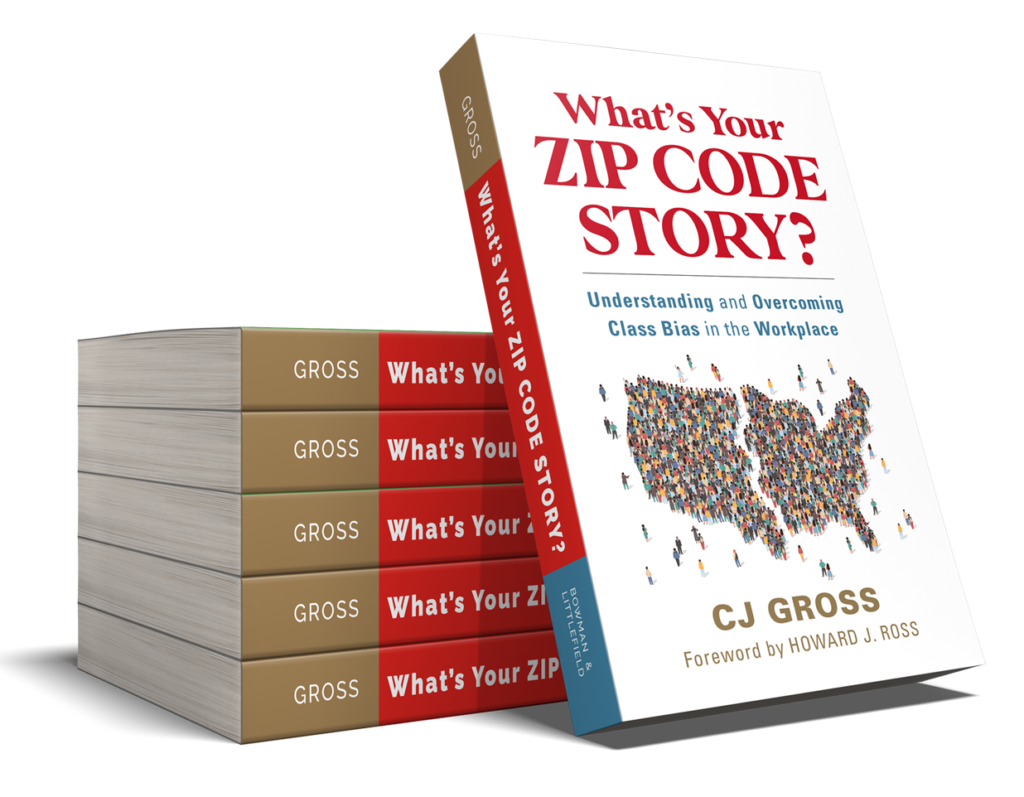
What's Your Zip Code Story?
Understanding and Overcoming Class Bias in the Workplace
- A book about class inclusion that impacts company productivity, turnover, and revenue.
- A book that expands our conversation about class bias, race, and equity.
- A book that sparks ideas about inclusion and equity in the workplace.
Learn More
Shedding light on class division, this book offers solutions to class bias in the workplace by analyzing real experiences, social norms, education, wealth, and more.
What’s Your Zip Code Story helps clarify the intersection of class bias and racial disparity in the workplace and arms organizations with the knowledge to not only have productive discussions, but also adopt effective solutions. The book tackles challenges that class-migrants encounter when navigating the workplace and provides operative practices that can be utilized to hone new professional skills and drive positive change in workplace culture. It is a powerful tool that will inspire marginalized employees who are hungry for personal and professional growth, as well as give insight to business leaders seeking a new way to engage their teams. Through the lived experiences of the author and research-based strategies, readers will find insights on how to increase workplace engagement and business performance.
Book ENDORSEMENT

JOAN C. WILLIAMS
Author, Bias Interrupted: Creating Inclusion for Good and for Real and White Working Class
“What’s Your Zip Code Story? shows why it’s important to include class in your diversity initiatives, not because class is more important than race but because you won’t be able to effectively recruit and retain people of color without addressing class as well as race and because first-generation professionals of all races are, in effect, migrating from one class culture to a different one. This book will help.”

JOHNNETTA BETSCH COLE
PhD, President Emerita, Spelman and Bennett Colleges; Director Emerita, Smithsonian National Museum of African Art; and Chair of The Board and President, National Council of Negro Women
“This timely and important book . . . brings a fresh and innovative perspective to our nation’s current discussion on issues of diversity, equity, accessibility, and inclusion in the workplace. From the very beginning of our nation, a person’s place of birth has had a profound impact on almost every aspect of their opportunities in life. Drawing on his own life experiences, as well as the experiences of others, Gross speaks to this critical reality. He does so by not only providing organizations with tools and strategies to help facilitate a more inclusive and equitable workplace, he does the same for his fellow “class-migrants” who are looking to climb the social and workplace ladder. For everyone who is a stake holder in the diversity and inclusion discussion, this is a must-read book!”

Howard J. Ross
Founding partner of the nationally recognized diversity consulting firm Cook Ross, Inc., is the author of Reinventing Diversity, and many more
“This is a book that has needed to be written for a long time. Cultures are almost always built around some element of mythology. The stories that we are told, both real and through allegory, are the foundation of what we come to believe about our culture and, correspondingly, our lives. From its earliest days, American culture has rested on the myth of social movement.
As someone who has spent the past fifty years working on issues of equity and equality, I have often been shocked by how invisible class has been, in most cases, in so many of these conversations. That’s why I am so gratified that CJ Gross does an exceptional job of casting light on this extraordinarily important but largely whispered-about topic.
He does an excellent job of looking at the intersectionality of class and seeing how race, gender, and other distinctions of identity influence how the system plays out. By weaving all of this together, he gives us a clear window to see ourselves and how this system has impacted each of us, if we are willing to look. His narrative helps us understand this system at so many levels: the personal, in our communities, in the workplace, and beyond. The beautiful thing about this book is that it not only helps us understand the underpinnings of the system we live in, but also gives us an immensely practical look at how it impacts us in organizations today and what we can do about it.”







